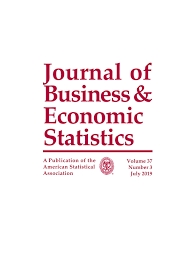Networked and protected
Governments rescued banks and insurances that were allegedly on the verge of collapse during the financial crisis. The reason for not failing these institutions put forward by the respective heads of governments in charge was the familiar expression that they were ‘too big to fail’ – a collapse would endanger the global financial system. But it's not simply size that renders a bank systemically relevant in the eyes of its government. As Michael Koetter from the Halle Institute for Economic Research (IWH) – Member of the Leibniz Association and colleagues discovered, the degree of networking with other financial institutions is also fundamental. "A bank that is either directly linked to many other banks, or connects clusters of other peers in the financial network as a kind of gatekeeper, can quickly infect other institutions," according to Koetter, Head of the Financial Markets Department at IWH.
Often, however, the level of networking is not directly visible and thus challenging to measure. The economists therefore derived the level of networking indirectly from co-movements of credit default swap (CDS) premiums and share returns using extreme value theories. Thereby, the researchers first identify highly connected peers and subsequently apply network theories to identify highly connected peers as system-relevant institutions.
Koetter and his colleagues then compared the results with what actually happened during the crisis – i.e. which banks did the governments support with public funds. The results show a clear correlation: The more central the bank was before the crisis in the global financial network, the higher the likelihood that it was rescued by its state during the crisis. A 1% rise in a bank's networking increased the likelihood of a government bail-out by 5.4%. Connected institutions were therefore substantially more often perceived by the government as "in need of rescue" and/or "worthy of rescue".
Importantly, the size of a bank remains to exert a clear and independent effect as well: a 1% rise in total assets increases the likelihood of a bail-out by 9%-10%. However, the data shows that the level of networking represents an additional effect on top of sheer size when it comes to the question of which banks are classified as ‘systemically relevant’.
"These figures do not permit conclusions about whether government bail-outs were fundamentally effective to avoid a global financial collapse though," clarified Koetter. "To answer that question, we would need a situation in which a bank was not rescued, but needed to be saved. What is clear though is that besides cross-border connections also cross-sectoral connections, for example between banks, insurances, and real estate trusts, exist and are considered by national government in crisis mode. Therefore, I think that for as long as we have mostly national legislative and executive authorities in charge to design financial systems, a more integrated approach towards the regulation and supervision across financial sectors and countries is of immanent importance to ensure financial stability in the future. The establishment of the European Banking Union is a good step into this direction. But in my view more financial – and thus presumably also political – integration is dearly needed in Europe and the world", says Koetter.
The study draws on CDS spreads for a total of 186 financial institutions and share price data for 164 institutions worldwide. Most of the institutions are banks, followed by insurance firms, trust companies and financial intermediaries of other sectors.
Whom to contact
For Researchers

Vice President Department Head
If you have any further questions please contact me.
+49 345 7753-727 Request per E-MailFor Journalists

Head of Public Relations
If you have any further questions please contact me.
+49 345 7753-720 Request per E-MailIWH list of experts
The IWH list of experts provides an overview of IWH research topics and the researchers and scientists in these areas. The relevant experts for the topics listed there can be reached for questions as usual through the IWH Press Office.
Related Publications

Too Connected to Fail? Inferring Network Ties from Price Co-movements
in: Journal of Business and Economic Statistics, 1, 2019
Abstract
We use extreme value theory methods to infer conventionally unobservable connections between financial institutions from joint extreme movements in credit default swap spreads and equity returns. Estimated pairwise co-crash probabilities identify significant connections among up to 186 financial institutions prior to the crisis of 2007/2008. Financial institutions that were very central prior to the crisis were more likely to be bailed out during the crisis or receive the status of systemically important institutions. This result remains intact also after controlling for indicators of too-big-to-fail concerns, systemic, systematic, and idiosyncratic risks. Both credit default swap (CDS)-based and equity-based connections are significant predictors of bailouts. Supplementary materials for this article are available online.



